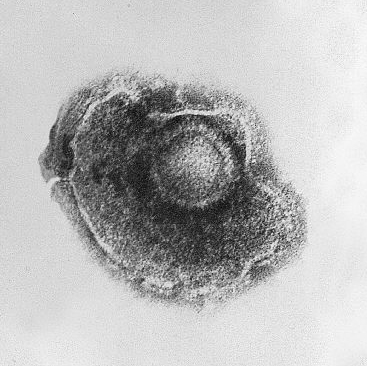Shingles
Shingles, also known as herpes zoster, is a viral disease characterised by a painful skin rash with blisters in a localised area. The rash typically occurs in a single, wide mark on either the left or right side of the body or face. Shingles is caused by the varicella zoster virus (VZV), the same virus responsible for chickenpox. After an initial chickenpox infection, VZV can remain dormant in nerve cells and reactivate years later as shingles.

Signs and Symptoms
The initial symptoms of shingles include headache, fever, and malaise, which are nonspecific and can lead to misdiagnosis. These symptoms are commonly followed by sensations of burning pain, itching, hyperesthesia, or paresthesia. The pain can range from mild to severe and is described as stinging, tingling, aching, numbing, or throbbing, often with sharp, agonising pain.


The characteristic rash appears one to two days after the initial symptoms and commonly occurs on the torso but can appear on the face, eyes, or other parts of the body. The rash follows a dermatome, usually in a stripe or belt-like pattern limited to one side of the body.
Development of the Shingles Rash




Face
Shingles involving the trigeminal nerve can lead to conditions like zoster ophthalmicus, affecting the forehead, upper eyelid, and orbit of the eye, potentially causing vision loss. Ramsay Hunt syndrome type II involves the ear and can result in hearing loss and vertigo. Oral shingles may involve the upper jaw, palate, lower jaw, tongue, or gums, and can be confused with toothache.
Disseminated Shingles
In immunocompromised individuals, disseminated shingles can occur, with more than 20 lesions appearing outside the primarily affected dermatome. This can affect other organs, making the condition potentially lethal.
Pathophysiology


Diagnosis

Diagnosis is typically based on the signs and symptoms. Laboratory tests such as PCR for VZV DNA or detection of VZV-specific IgM antibodies in blood can confirm the diagnosis. Differential diagnosis includes herpes simplex, dermatitis herpetiformis, and impetigo.
Prevention
Shingles risk can be reduced by the chickenpox vaccine in children and the shingles vaccine in adults. The shingles vaccines Zostavax and Shingrix reduce the risk of developing shingles or severe shingles. In the UK, the NHS offers shingles vaccination to all people in their 70s.
Treatment
Analgesics
Mild to moderate pain can be treated with over-the-counter pain medications or topical lotions like calamine. Severe pain may require opioids, and capsaicin cream or topical lidocaine may be used after lesions crust over.
Antivirals
Antiviral drugs such as aciclovir, valaciclovir, and famciclovir can reduce the severity and duration of shingles if started within 72 hours of rash appearance.
Zoster Ophthalmicus

Treatment for zoster ophthalmicus involves antiviral therapy similar to standard shingles treatment.
Prognosis
While the rash and pain usually subside within three to five weeks, about one in five people develop postherpetic neuralgia, a chronic pain condition. Other complications can include partial facial paralysis, ear damage, or encephalitis.
Self-assessment MCQs (single best answer)
What is another name for shingles?
What virus causes shingles?
Which of the following is NOT a typical initial symptom of shingles?
The characteristic shingles rash typically follows a:
Which condition can result from shingles involving the trigeminal nerve?
In immunocompromised individuals, shingles can become more severe and widespread, known as:
What is the best time to start antiviral treatment for shingles to reduce its severity and duration?
Which of the following is a common chronic complication of shingles?
What is the primary method for diagnosing shingles?
Which vaccine is recommended for reducing the risk of shingles in adults?
Dentaljuce
Dentaljuce provides Enhanced Continuing Professional Development (CPD) with GDC-approved Certificates for dental professionals worldwide.
Founded in 2009 by the award-winning Masters team from the School of Dentistry at the University of Birmingham, Dentaljuce has established itself as the leading platform for online CPD.
With over 100 high-quality online courses available for a single annual membership fee, Dentaljuce offers comprehensive e-learning designed for busy dental professionals.
The courses cover a complete range of topics, from clinical skills to patient communication, and are suitable for dentists, nurses, hygienists, therapists, students, and practice managers.
Dentaljuce features Dr. Aiden, a dentally trained AI-powered personal tutor available 24/7 to assist with queries and provide guidance through complex topics, enhancing the learning experience.
Check out our range of courses, or sign up now!


